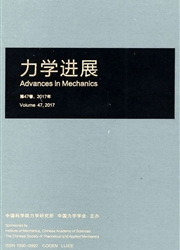

 中文摘要:
中文摘要:
计算流体力学(CFD)在航空航天等诸多领域的应用越来越广泛.特别是近年来,CFD在实际飞行器的设计中扮演着越来越重要的角色,许多设计参数直接来源于CFD的计算结果.由此,飞行器设计师对CFD提供结果的可信度提出了更高的要求.验证(verification)与确认(validation)是评价数值解精度和可信度的主要手段.本文综述了国内外开展CFD验证与确认研究的进展.在引言中论述了开展CFD验证与确认的重要性和必要性,简述了国内外CFD验证与确认研究的历史和发展现状.第2节中讨论了CFD验证与确认的一些基本概念,以及这些概念定义的形成过程,并指出了进行CFD验证与确认的基本步骤.第3节和第4节分别讨论了CFD验证与确认的方法,如CFD验证中的精确解比较方法,制造解比较方法,网格收敛性研究;CFD确认中的层次结构,流动分类法,确认实验指南.在第5节中我们列举了几个CFD验证与确认的应用实例.最后,对我国开展CFD验证与确认研究工作提出了若干建议,包括:(1)开展流动分类法研究,(2)推行软件质量工程方法,(3)开展规范精细的实验,建立国内的网络数据库.
 英文摘要:
英文摘要:
During the last two or three decades, computational fluid dynamics (CFD) has been widely used in the scientific research and the analysis and design of engineering systems. Especially in recent years, CFD has been playing a more and more important role in the design of aeronautical and astronautical vehicles. So many design conditions for realistic aircraft have been determined directly from the results of CFD. However, users and developers of CFD today face a critical question: How can the confidence in modeling and simulations be critically assessed? Verification and validation (V&V) of CFD are the primary methods for building and qualifying this confidence. In this paper, the state of the art of V&V of CFD is reviewed. In the introduction, we first discuss the background and importance of V&V in CFD, and then review briefly the history of V&V. Secondly, the basic terminology and methodology of V&V are discussed, including several fundamental concepts, the definitions and the basic processes. Section three discusses the primary processes and methods of verification, including analytic solution method, manufactured solution method and grid convergence analysis. Section four discusses the primary processes and methods of validation, including validation tier hierarchy, flow classification, and some guidelines for validation experiments. In the fifth section, several applications of verification and validation are presented, including the typical Lax problem solved by WENO scheme and our DWENO scheme, hypersonic flows over the hollow cylinder/truncated flare and sharp double cone configurations presented by P. Gnoffo, supersonic side-jet interaction for an axissymmetric body. Finally, some comments are made with respect to the development of V&V of CFD in China: (1) the importance of flow classification research, (2) on software quality assurance, (3) on the international academic activities and successful databases, (4) on standardizing our experiment data and documents
 同期刊论文项目
同期刊论文项目
 同项目期刊论文
同项目期刊论文
 期刊信息
期刊信息
